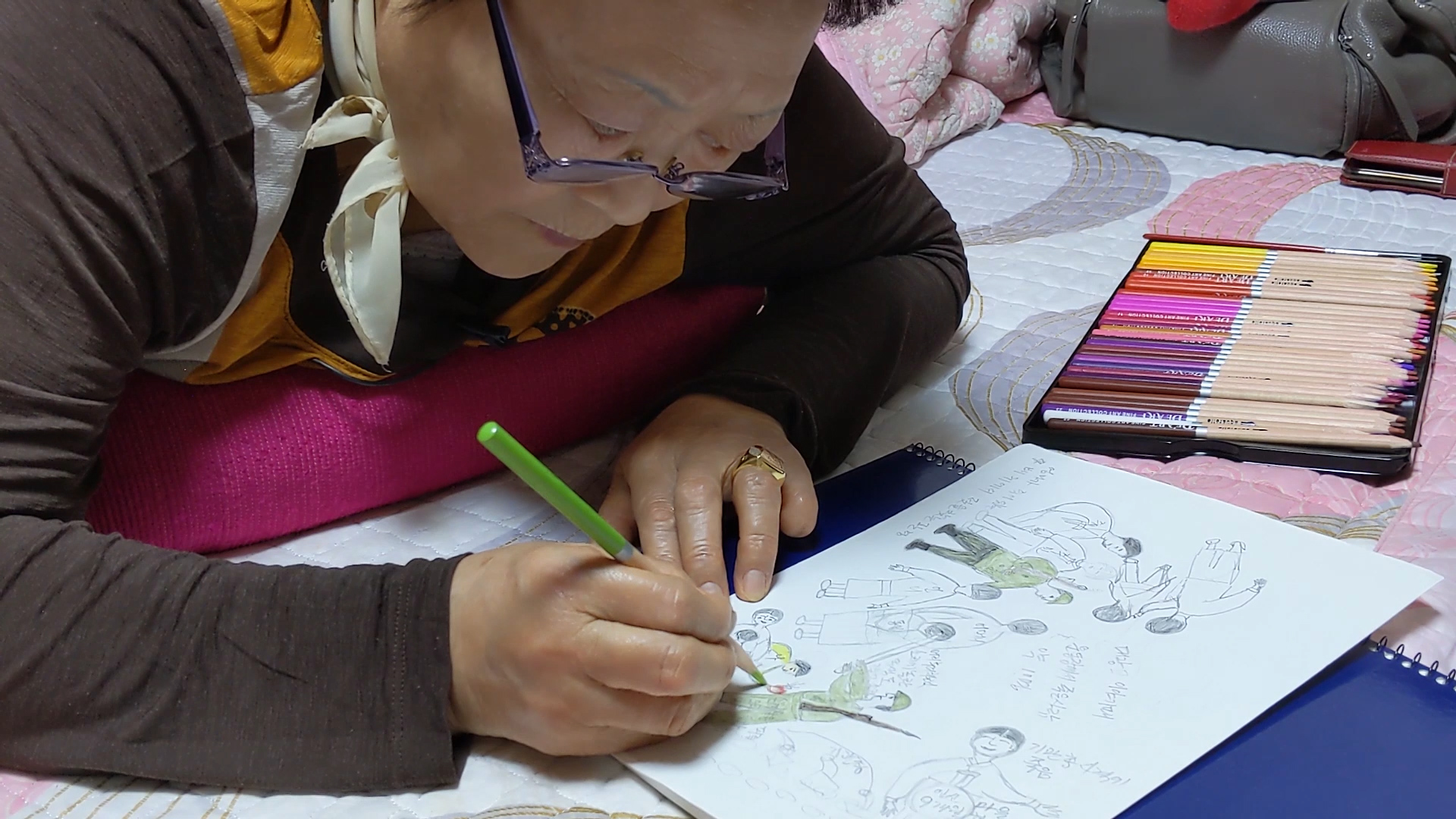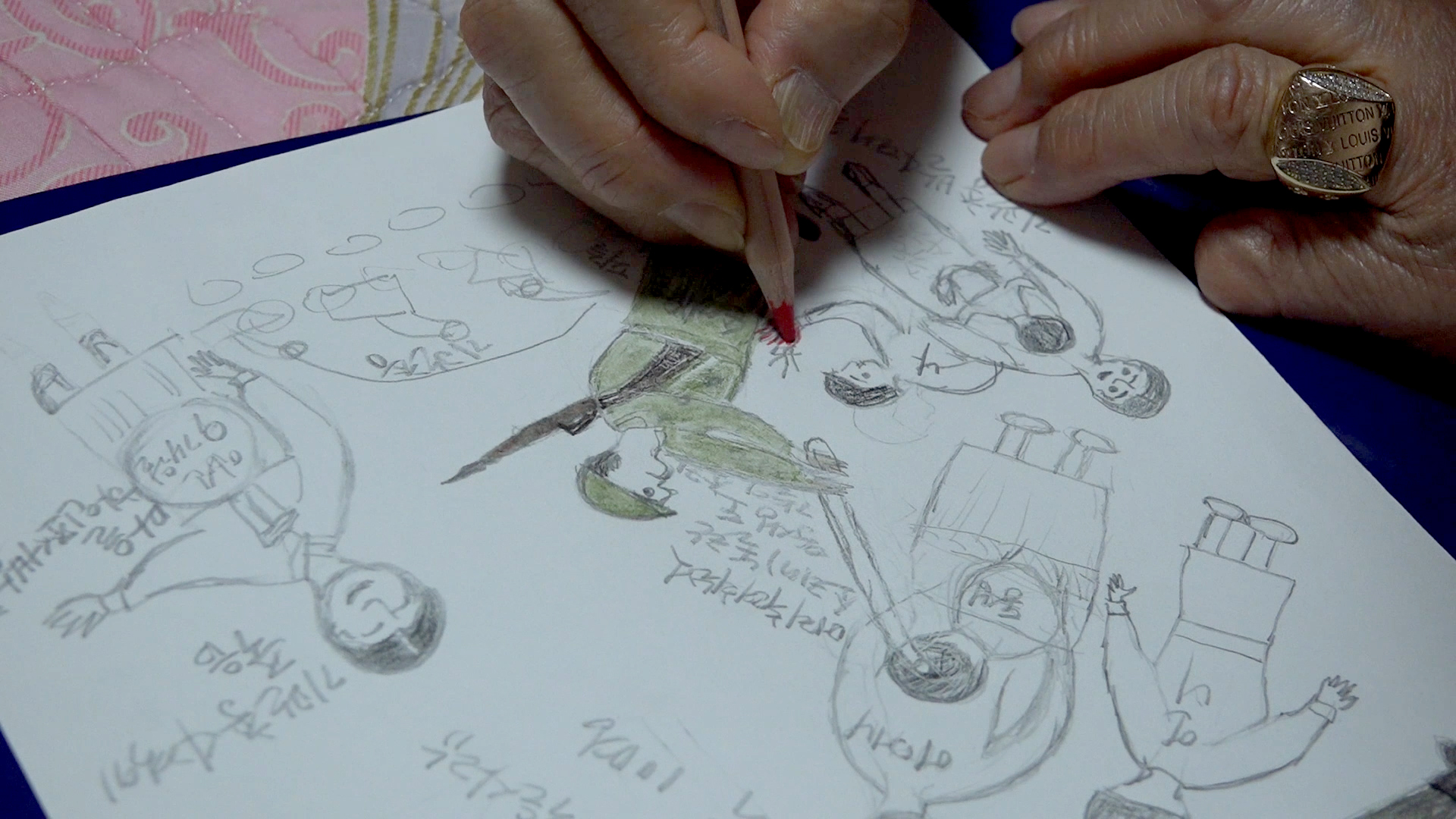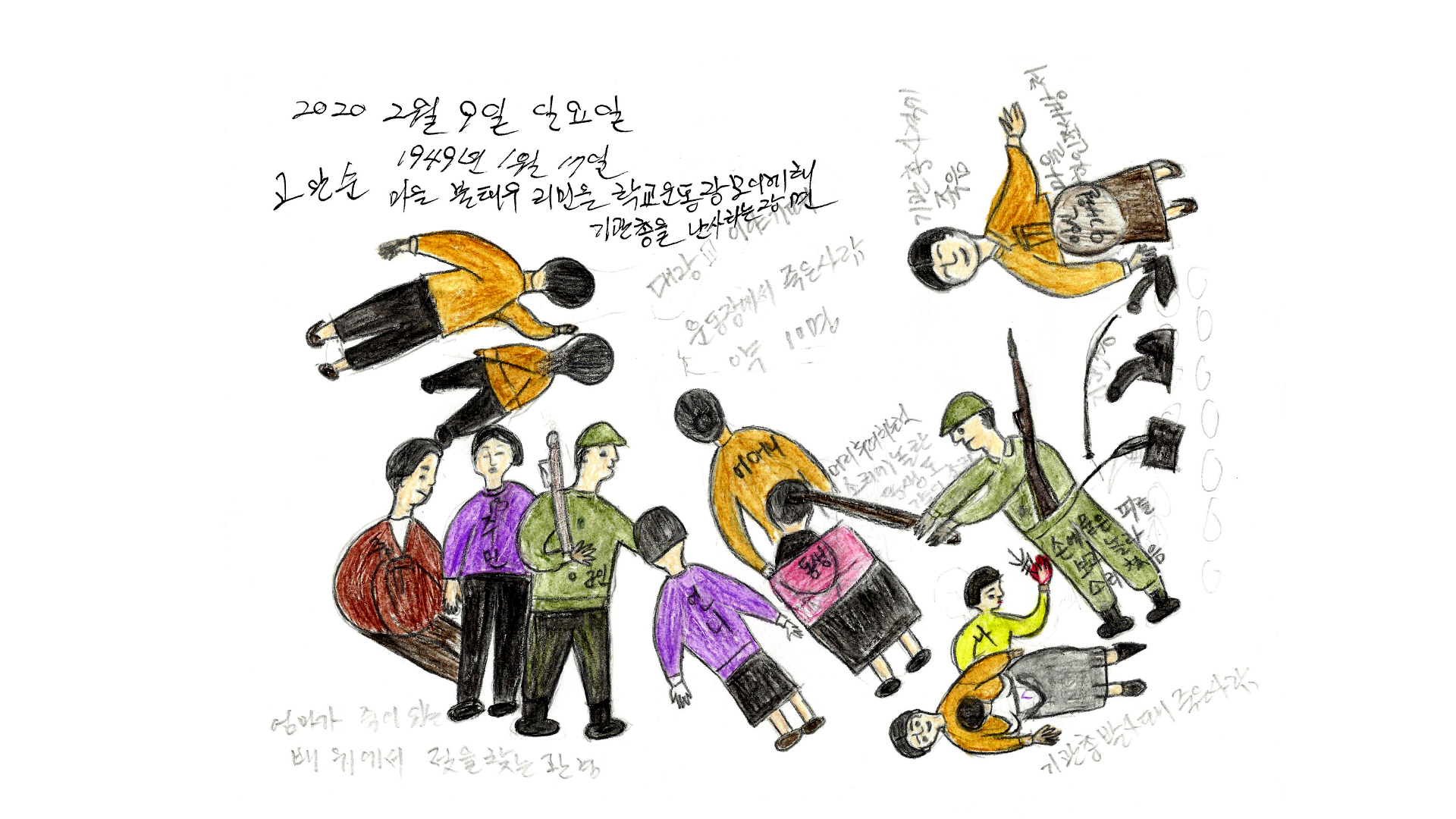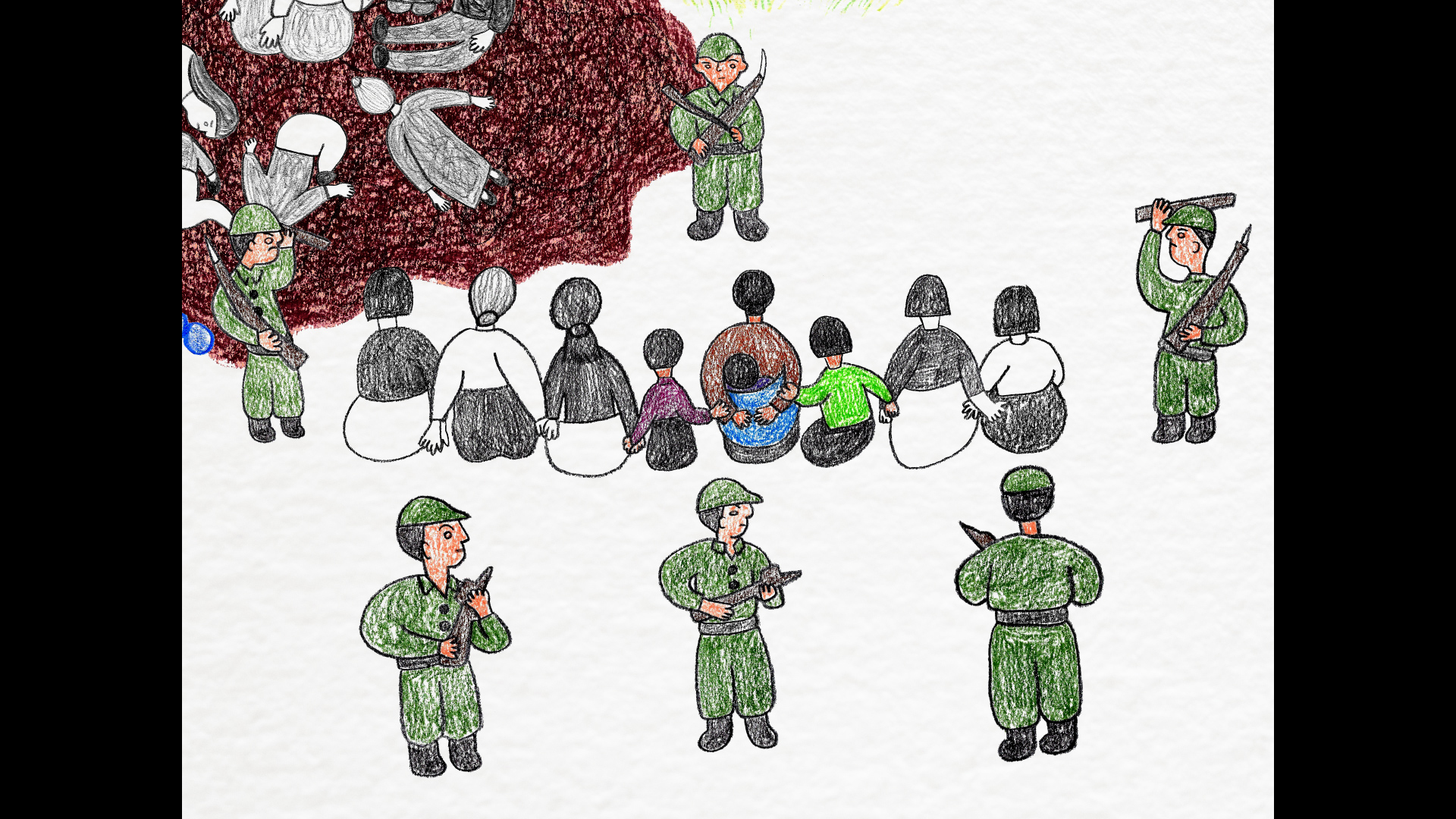Projects
Twinkle Twinkle
Jude KANG
- Korea
- 70min
- DCP, mp4, mov
- color/black and white
Synopsis
Jeju island, the Korean version of Hawaii, is loved by many tourists and filled with beautiful sparkles. But unlike the visitors, there are those who are living on the island with different sparkling memories.
Ko Wan-sun is drawing a painting. But in the painting depicting how the island looked 70 years ago, there is something sparkling. That is the frozen land covered with dark-red blood.
When the Second World War came to an end and Korea was liberated from Japan, Jeju islanders dreamt of peace but faced with a tragedy that took away the lives of more than 30,000 civilians. Now 70 years have passed, children who survived the massacre testify the memories of the days with drawings. They try to carry on the history that is not over yet and that they wanted to look away from.
Review
Jeju 4•3 is the second deadliest event next to the Korean War in Korean modern history, but there is still no consensus on its historic definition. The bereaved families say Jeju 4•3 is a tragedy of the international Cold War that is clearly attributable to the US. The film follows the unexplained reality of Jeju 4•3.
The violence left long-lasting wounds across generations. Can they be healed? The film tries to offer healing by letting the survivors take their stories of the past out into the present with their drawings. The film aims to see if their wounds can be healed through illuminating their history.
Last but not least, the film wants to face the setbacks and ironies that occur in reality. A close examination of historic events might leave another wound. The film aims to ask how problematic the things we take ‘for granted’ are, and how much should we consider such areas more deeply.
Director
-

Jude KANG
Credit
- Producer조이예환 Jeremy JOEY




